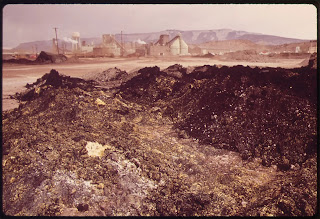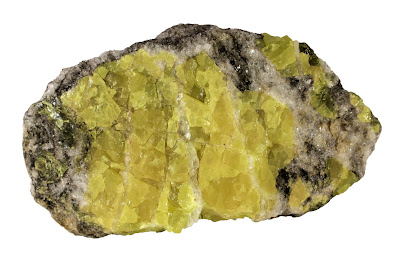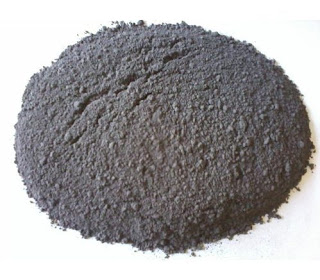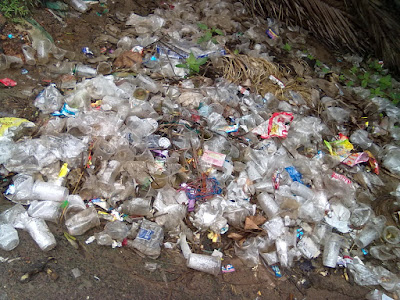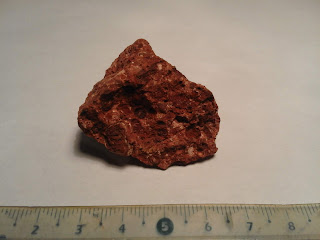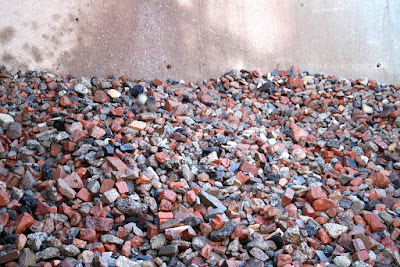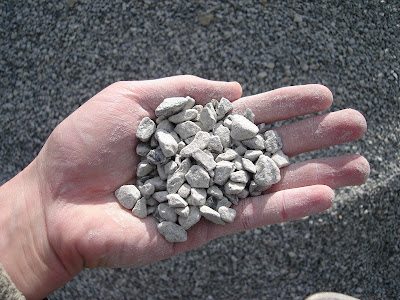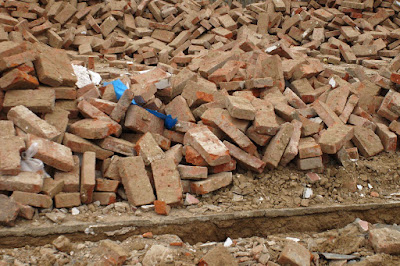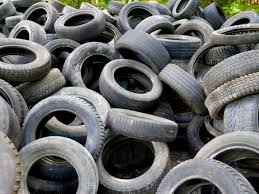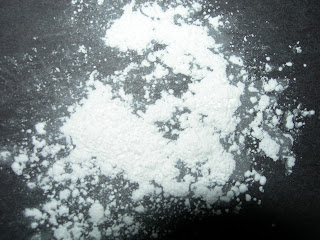Use of waste products and industrial by-products in making concrete in construction industries.
For a long time India has emphasized the importance of sustainable development or sustainable development in infrastructure. The development of technology is called efficient development, to the extent that there is a balance between progress and the environment.
Natural resources used in construction such as crust, cement, sand, asphalt and water are not sustainable. In order to compensate for the loss of these traditional materials, it has become necessary to use local waste materials and industrial waste in construction.
Reusing such waste materials reduces the pollution of the atmosphere as well as reduces construction costs.
Some of the waste materials used in concrete are as follows:
- Flay ash.
- Recycled aggregates
- Foamed slag
- Byproduct gypsum
- silica fume
- Crushed bricks
- Plastic wastes
- Scrap tyres
- Marble sludge dust
- Crusher rock dust
- Waste steel pieces
- Red mud
- Phospho gypsum etc.
1. Fly ash:
Fly ash is the ash generated from the burning of coal in a thermal power plant. Two types of ash are produced
The particle of fly ash is very small. It goes up with smoke in the chimney where it is collected by the electro static precipitator.
The particles of Bottom ash are slightly larger. It gathers at the bottom of the chimney.  |
| fly ash |
Fly ash is a Pozzolanic material. In a 1 Year, thermal power station with 1000 MW capacity. Up to 5 MT (15 x | 106 T) of fly ash is produced, which requires up to 100 hectares of land to heap. Which pollutes land also air. Thus, the question of disposal and pollution of fly ash can be reduced if fly ash is used as a building material.
The various uses of fly-ash in construction are as follows:
- Fly ash concrete
- Fly ash aggregate (light weight)
- Fly ash bricks / blocks
- Fly ash blended cement
- Fly ash – lime – gypsum (Fal / G).
- Fly ash road embankments
Fly ash has become widely used in making concrete. Cement concrete does not reduce the strength of concrete despite the addition of fly ash up to about 40% of the weight of cement under different conditions. Up to about 25% fly ash is added to the RMC. Fly ash improves the workability of concrete and reduces the w/c ratio and Strength increases.
- Increases the versatility of concrete.
- Heat of hydration decreases.
- Strength of concrete increases.
- Costs decrease.
- The pollution of the atmosphere is gone.
2. Recycled aggregates:
Due to the large-scale infrastructure development in the country, large quantities of construction materials are needed. In addition, earthquakes, hurricanes, hurricanes, tsunamis, etc. cause many structures to collapse and large quantities of waste are generated.
 |
| Recycled aggregate |
If such construction waste is recycled through recycling, construction costs can be reduced and the problem of such waste disposal will also be solved. But at present, only about 3% of recycled aggregate use in construction. One of the main reasons why such aggregates are used is that there is a mis-understanding among people that recycled aggregates are of low quality.
Waste concrete is broken down to get the required size aggregate. Steel is removed from it. It is necessary to remove glass, paper, pieces of wood, gypsum boards, clay, asphalt etc. from the aggregate. Research has shown that a good quality recycle aggregate can be used to make concrete with a cohesive strength of up to 80 N /mm2.
If the 20 to 30% of recycled aggregate use in a concrete, does not reduce the strength of concrete and other properties.
3. Foamed slag:
Foamed slag is an important type of light – weight aggregate. Blast furnace slag is found as a by product of pig, iron production. This slag gets a granulated slag if cooled with too much water. If the slag is cooled with limited water, the vapor dissolves and the porous honeycombed material is found to resemble a pumice stone.
 |
| Fomed slag |
Often the molten plague is shaken quickly with periodic water and the steam and gas are soaked in. Such an object is called foamed slag or expanded slag.
Large-scale Foamed slag is produced at Bhadravati Steel Plant. Of which the Building block and partition wall panels are made up. Such items are light in weight. foamed slag is also used for making precast RCC lintel and small structure component. It is also used to make lightweight concrete.
It is also often called GGBS (Ground Granulated Blast Furnace slag).
Advantages:
- Decrease in heat of hydration
- Refinement of pore structure
- Decrease in permeability
- Increase the barrier against chemical attack
- Uses:
- Slag cernent, making super sulphated cement
- Expansive cerment, making oil well cement
- Use as a aggregate in concrete.
- In refractory and in ceramic as sital
4. Byproduct gypsum:
Gypsum is found as a byproduct in a fertilizer plant, whose uses are as follows:  |
| Gypsum |
- For making Gypsum plaster and gypsum board.
- Creating Cement and Sulphuric Acid.
- To slow down setting type in OPC cement.
- Make Expansive Cement and Super sulphated cement.
- as a hydraulic binder.
5. Silica fume:
A silica fume is found as a byproduct in silicon production. It is a Pozzolanic material. Silica fume particles are extremely fine, average diameter of this particle are 0.1micron .
Silica fume is more beneficial in concrete with higher w/c ratio. It accounts for 0 – 10% of cement.
SAIL has established a 3000 tonne silica fume production plant at Bhadravati. Its density is 500 – 600 kg/m2 and the specific surface is 15, 000 – 20, 000 M2/ kg.
Advantages of adding silica fume to concrete:
- Use As a part of cement (0 – 10%).
- Ultra high strength concrete making (Strength 70 to 120 MPa).
- To control Alkali – aggregate reaction.
- Increase the starting strength of Fly ash / slag cement
- to suppress sulphate attack.
6. Crushed bricks:
In Bangladesh and West Bengal where natural aggregates are obtain very less where burnt brick or crushed brick use as a coarse aggregate in concrete, a large quantity of brick is rejected in the production of bricks and. Such bricks can be used as an aggregate in concrete.
 |
| CRUSHED BRICKS |
According to research done at Dhaka University, brick pieces of 20mm size can be use for for making M25, M30, M35 mix concrete. In such a case the w/c ratio is kept at 0.4, and such density is less than the density of normal concrete.
7. Plastic wastes:
Plastics pollute the environment. It is non-biodegradable.If it is ignited to do destroy the plastic so, it produces toxic gases and pollutes the atmosphere.
 |
| PLASTIC WASTE |
8. Scrap Tires:
Production, use and disposal of rubber tires has increased with the development of automobile industries in India. The disposal of such wasted tires is a big question.
Waste tires of the truck use in a concrete by making 12 mm and 16 mm size chips, mixing it in concrete in a proportion of 2: 3 in a place of Coarse aggregate. 20 to 30% waste tyres used in a concrete.
 |
| SCRAP TYRES |
There by increasing the workability of rubberised concrete. The density of concrete from 30% rubber aggregate is found to be 2200 kg/m2(Normal concrete 2500 kg/m2), suggesting a reduction of 12%.
Also, rubber aggregate reduces the absorption of water so that higher workability can be achieved by keeping a low w/c ratio. Which is useful for high performance concrete. Using a rubber aggregate can reduce the use of plastic and super plasticizer. The concrete’s coarse stent is reduced by 15% rubber aggregate.
9. Marble Sludge dust and Crusher rock dust:
Marble sludge powder is found in wet conditions from the marble factory. It comes from 1 mm sleve drying. It has a high proportion of CaO which indicates that its original stone is marble or lime stone, this should not be organic matter.
 |
| MARBAL DUST |
Marble dust is used as a fine aggregate in concrete. By adding 30% marble dust and 70% quarry rock dust in place of Fine aggregate in the concrete, increase in the 28-day compressive strength. As well as workability of concrete is also increased. In addition the 7 day strength also increases, so that formwork can be removed soon. This type of concrete is useful as Self Compacting Concrete(SMC). Whose improve pumpability, flowability And the compactibility of concrete.
10. Waste steel pieces:
Appropriate sizes and proportions of waste steel pieces found in steel plants by adding this steel pieces in the concrete, increase the strength, density, properties of concrete.
 |
| WASTE STEEL PIECES |
Such steel fiber flat 50 mm length, 2.5 min width and 0.5mm thin. As well as 0.5 mm in diameter and 30 mm long wire used. Its amount present in concrete is 0.5 to 1%. By using this material in a concrete, increasing compressive strength of concrete as well as tensile strength of concrete.
11. Red Mud:
An alumina red mud or bauxite reject from an aluminium-making plant and it is meet as a by-product. About 4 million tonnes of red mud is produced annually from different aluminium plants in the country.
 |
| RED MUD |
The product made by combining Red Mud 25% and PVC 75% is known as Red Mud Plastic (RMP). Brick is also made up from Red mud, which gives a beautiful appearance.
Uses:
- For making Bricks
- For making tiles
- For making Lightweight structural blocks.
- Creating roof rafters.
- To make cellular concrete.
- To make an aggregate.
12. Phospho gypsum:
Phospho gypsum is found as a solid byproduct in a plant of fertilizer and phosphoric acid. It is the second largest pollutant after fly ash. About 12 million tonnes of Phospho gypsum is produced annually from about 12 fertilizers and phosphoric acid plants in our country.
Phospho gypsum contains impurities such as phosphates, fluorides, alkalies and organic matter. Cement affects properties such as setting and strength. Phospho gypsum is used mainly in cement production as well as in raw material in sulfuric acid production.
Other uses:
- Gypsum board making.
- Make Jeeps Block
- Super sulphated cement making.
- Make cement clinkers.
- Make wall partition panels.
ALSO READ
HOW UNDER REAMED PILES CONSTRUCTED
CAUSES OF CONSTRUCTION PROJECT FAILURE
